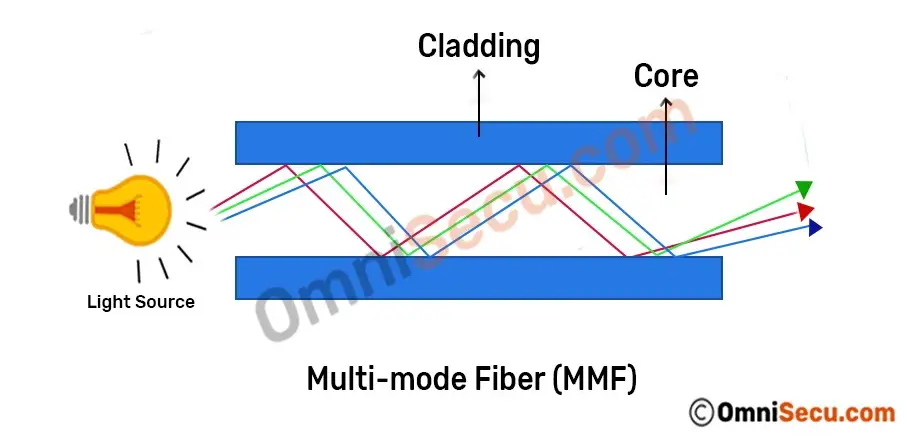Multimode Fiber Optic Cable (MMF fiber cable)
Multimode fiber (mmf) uses multiple rays of light simultaneously with each ray of light running at a different reflection angles to carry the transmission over short distances. Multimode optical fibers have large cores (50 µm or 62.5 µm) when compared with single mode optical fibers (less than 10 µm). Multimode fibers can transfer many modes of light signals simultaneously.
Thus, multimode optical fiber cables can transmit more light signals than single mode optical fibers (SMF). Increased diameter and more modes can cause more light reflections and more attenuation of light signals. Attenuation is the reduction in the intensity of a light signals when signals are transferred to long distances because of scattering of light.
So, multimode fibers (mmf) are used to carry light signals over a short distance, typically in a LAN.
Please refer below image to understand how signal is transferred in multimode optical fiber (mmf)
